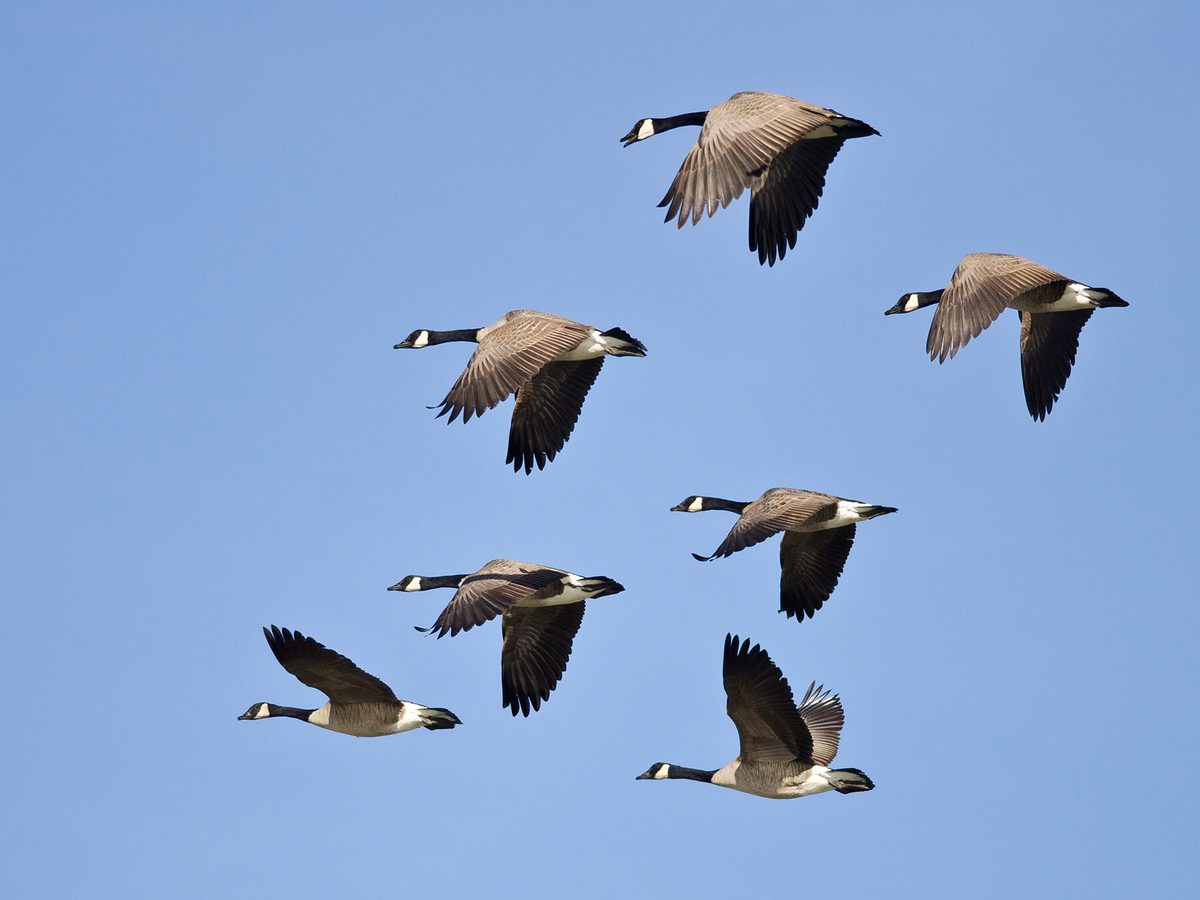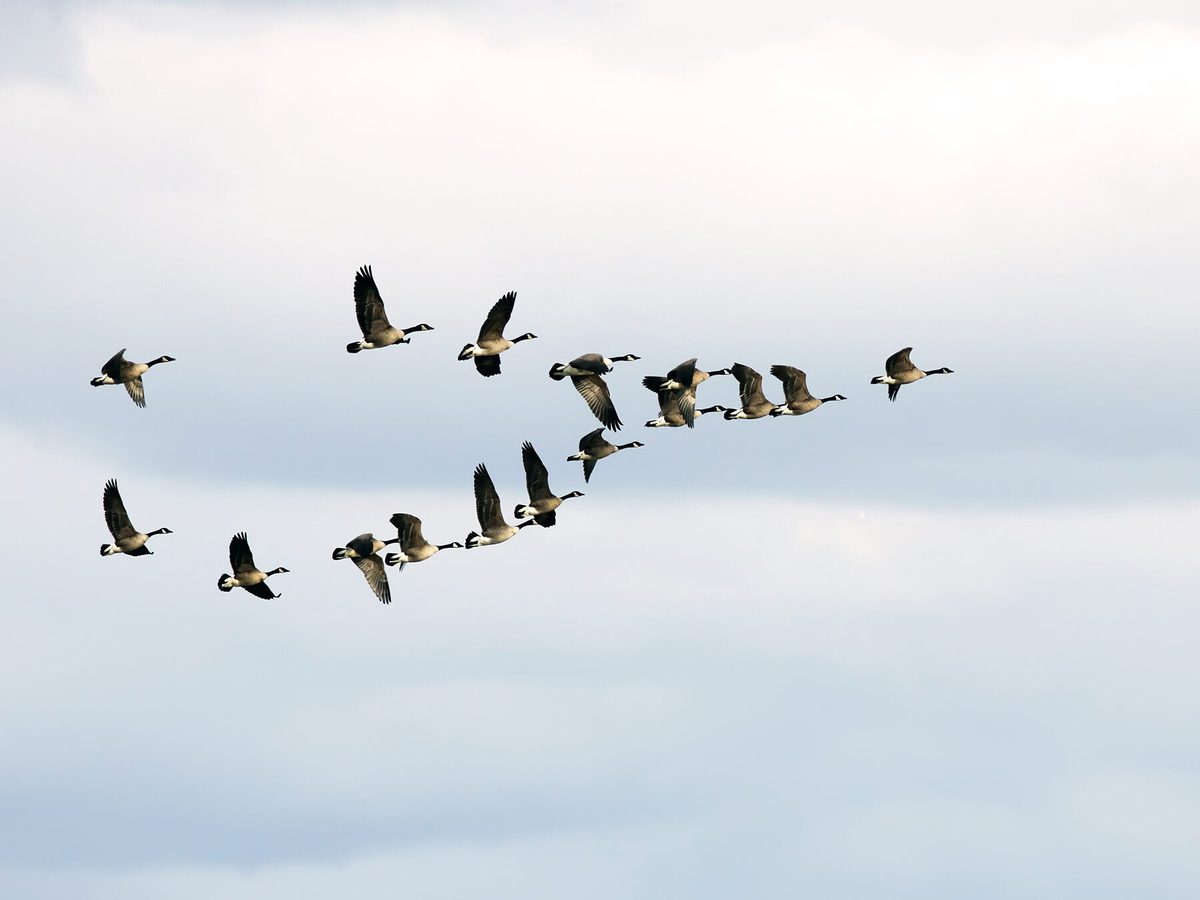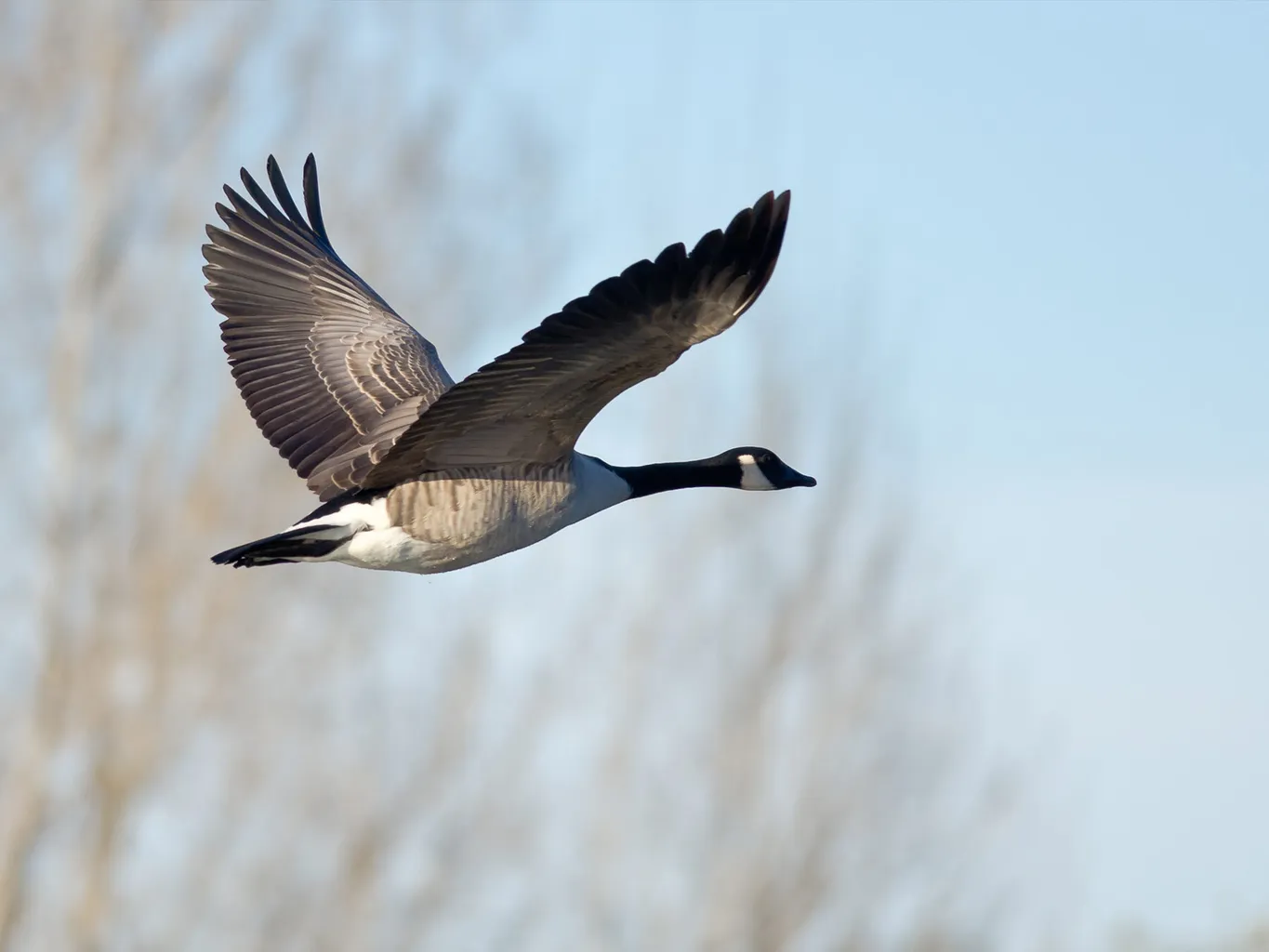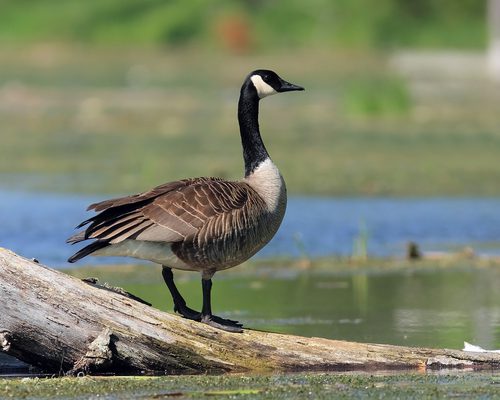The Canada Goose (Branta canadensis) is a very familiar waterbird that can be seen in every state in the continental United States. They were also introduced to the United Kingdom in the 17th century, and today they are a common species there. Flocks and family groups of Canada Geese flying in their classic V-formation have long symbolized the coming warm days of summer and then the chill of winter.
These birds have changed their habits to adapt to our ever-changing world, however, so what are their migration patterns like today?
Migratory populations of Canada Geese still fly between their traditional breeding grounds in Canada and Alaska and their overwintering grounds in the United States and Mexico. Canada Geese were probably exclusively migratory in the past, but in modern times their habits have changed somewhat.
Today you can spot Canada Geese in any state in the lower 48 at any time of the year. The introduced population in the UK is also sedentary, staying in the country for all four seasons.
Canada Geese fly in family groups and flocks that vary in size. They migrate both during the day and at night, although they often take off around dusk.
They are capable of flying over 1000 miles (1600km) in a single day and can reach speeds of up to 70 miles an hour (113km/h) in favorable winds.
This article covers the migration of the Canada Goose. You will also learn why many of these birds have decided to share our spaces throughout the year.

A small flock of Canadian Geese migrating
Do Canada Geese migrate?
Canada Geese are partial migrants. Migratory populations of these birds move north and southwards on a seasonal basis. They do this to exploit rich feeding and breeding grounds in the north during summer, and milder weather conditions in the south during winter.
Some populations have become sedentary, however. Continue reading to learn why.
Why did Canada Geese stop migrating?
Canada Geese weren’t always as common as they are today. Their numbers had plummeted due to overhunting and habitat destruction around the start of the 20th century, leading conservation authorities to reintroduce them from areas where they still occurred in good numbers.
Canada Geese have adapted so well to human-altered landscapes like parks, fields, and pretty much anywhere with lawns and nearby water that they have become a nuisance in many areas. Many have lost their fear of humans and they can be aggressive when breeding. Living alongside us has benefited them greatly by reducing predation on their eggs and goslings by wild animals.

Close up of a Canada Goose bathing in the water, with spread wings
When do Canada Geese migrate?
Canada Geese migrate twice a year in North America. In the spring, they fly from their overwintering grounds in the United States to their breeding grounds in Canada and Alaska. After breeding, these familiar waterfowl return in the fall to spend the winter preparing for the next breeding season.
Canada Geese begin their southward migration as early as August. Their peak arrival in the United States happens in the fall months of September and October, although they may only arrive at their most southerly wintering grounds by November. By March, their northward migration is in full swing and most migrants have crossed into Canada by April.
Canada Geese have become naturalized in the UK after an early introduction in the 1600s. Today the population stands at nearly 200,000 birds which live across most of the country. The population is sedentary and the geese can be seen in suitable habitats throughout the year.

Close up of a Canadian Goose in flight
Why do Canada Geese migrate?
Canada Geese migrate north to take advantage of abundant food sources and breeding habitats when the temperatures warm in their northern breeding grounds. They must return south after breeding when temperatures begin to fall.
Modern agriculture and landscaping have altered the environment to make it suitable for the birds all year round, which is why many Canada Geese have abandoned their traditional annual migration.
How far do Canada Geese migrate?
Canada Geese migrate varying distances. Some populations from the mid-latitudes of the United States may not migrate at all, while birds that nest in Canada migrate a medium distance south into the United States.
The Canada Geese that migrate furthest are those that breed the furthest north. Interestingly, these birds migrate the furthest south, effectively leap-frogging the short-distance migrants and resident birds.

Some populations of Canadian Geese do not migrate at all
Where do Canadian Geese migrate to?
Broadly speaking, migratory Canada Geese fly between Alaska and Canada in the north and the United States in the south. The geese that leave the United States in spring might be heading anywhere between Labrador in the far east of Canada and Alaska in the far west.
Canada Geese do not nest necessarily nest in colonies, although several pairs might use the same island or bank on a lake, pond, or river to raise their goslings.
After breeding, Canada Geese head south to their overwintering grounds. They prefer habitats that provide plenty of the grass and crops that they prefer. They visit the lower states across roughly the bottom half of the US and even venture into Mexico.

A small flock of migrating Canadian Geese flying in formation
How long does it take for a Canada Goose to migrate?
Canada Geese can migrate surprisingly quickly. Birds that migrate nonstop can cover an incredible 1,500 miles in a single day. These geese usually fly at about 30 miles per hour (50km/h) although they will use favorable winds to speed up to 70 miles per hour (113km/h) or more.
Their migrations can take much longer, however. Spring migrations can take several weeks if their progress is delayed by late snowmelts and thaws.
Do Canada Geese fly nonstop?
Canada Geese can fly nonstop, depending on the distance they are migrating. This could be influenced by factors such as weather conditions and the health of the birds. They will stop over to feed and rest at staging areas, however.

Close up of a Canadian Goose swimming on a lake
Do Canada Geese migrate in flocks?
Canada Geese migrate in flocks. The size of the flocks varies but tends to be larger for later starters.
Are all Canada Geese migratory?
Increasing numbers of Canada Geese are becoming sedentary in the United States. The possible reasons for this behavior change include improved foraging habitat due to abundant lawns and waste grain that the birds find in agricultural fields.
An interruption in natural behaviors due to reintroduction programs to different parts of the country could also have played a role.
Geese which are still migratory have changed their habits and are now overwintering further north than before. They have learned to exploit the waste of maize and grain farms as a food resource, rather than relying solely on native grass plants near wetland habitats.
Increasing temperatures are also thought to be responsible for changing migration patterns and timing.

Canada Goose feeding on grass during the spring
Where do Canada Geese go in winter?
Migratory Canada Geese head south for the winter. They spend these months in the southern United States from the west Coast to the east, as well as in parts of Mexico. Canada Geese prefer to overwinter where open waterbodies (for roosting) and agricultural fields (for feeding) occur close together.
Where do Canada Geese go in the summer?
The summer breeding season is spent in Canada and Alaska. The females show high breeding site fidelity and will return every year to breed in the same area where they were born. These birds nest in a variety of habitats, often close to the water and in low vegetation.

A pair of Canadian Geese
Canada Goose Migration FAQs
Do Canada Geese migrate from the US?
While many Canada Geese have become sedentary in the USA, others still follow their traditional migration paths, flying north across the border into Canada or into the state of Alaska to enjoy the mild summer weather.
Do Canada Geese migrate from the UK?
Canada Geese generally do not migrate to or from the United Kingdom. The introduced population there is sedentary.
Do Canada Geese migrate at night?
Canada Geese tend to begin their flights around dusk, although they are known to migrate during the day or night.
Where do Canada Geese go at night?
Canada Geese sleep on or near water at night where it is safer from predators. Geese that sleep on the shore will often sleep standing on one leg with their heads resting between their shoulders.

